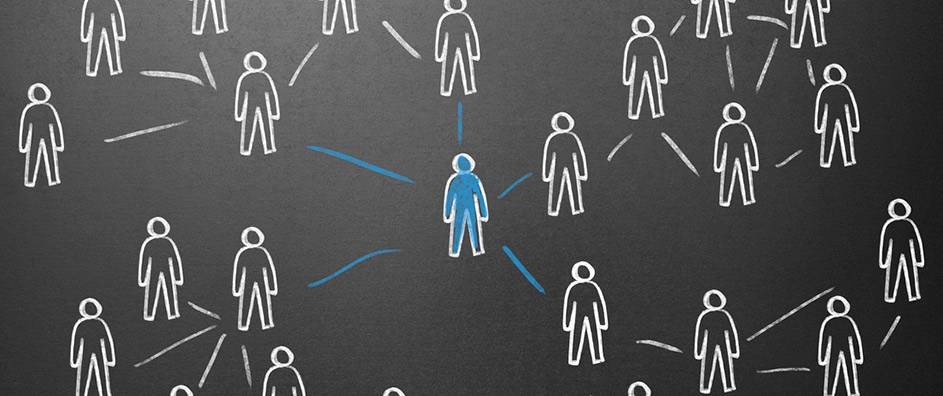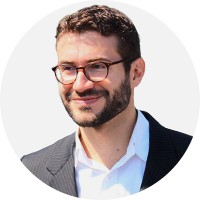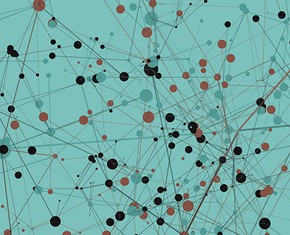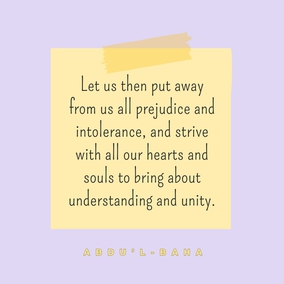The views expressed in our content reflect individual perspectives and do not represent the authoritative views of the Baha'i Faith.
Let’s consider a question posed by both religion and science: “How do we balance our inner and outer lives?”
The Baha’i teachings ask us to unite these two essential parts of our being:
They should partake, at least, as much from the light of the resplendent brow and the advent of the manifest day so that they may become enabled to unite their outward and inward selves… Now must they make eloquent effort and exalted endeavor that the inward mysteries not oppose the outward deeds, nor the outward deeds turn away from the inward mysteries. – Baha’u’llah, Tablet of the Holy Mariner, Part II, provisional translation by Mehran Ghasempour.
We can better understand how to balance our outer and inner lives through scientific discoveries. Dr. Daniel Siegel of UCLA’s School of Medicine, the Director of the Mindsight Institute, has published widely about the flow of energy and information among people in a field of study he coined Interpersonal Neurobiology. Siegel noted that this field of knowledge “has emerged from the objective study of science and the subjective knowledge of internal reflection.” Objective knowledge is gained from externalizing energy to observe the outer world, while subjective knowledge is gained from internalizing energy to observe the inner world.
In The Developing Mind: How the Brain and Relationships Interact to Shape Who We Are, Dr. Siegel writes:
The mind has distinct modes of processing information. For example, our sensory systems can respond to stimuli from the outside world, such as sights or sounds, and can ‘represent’ this information as patterns of neural firing that serve as mental symbols. The activity of the brain creates ‘representations’ of various types of information about the outer and inner worlds. For example, we have representations of sensations in the body, of perceptions from the five senses, of ideas and concepts, and of words… the weaving together of these distinct modes of information processing into a coherent whole may be a central goal for the developing mind across the lifespan. This process of linking differentiated parts into a functional whole is called ‘integration.’ – pp. 8-9.
Just as health within an individual requires integration, healthy groups require integration:
…one mind shapes the development and function of another—the essence of interpersonal interaction. How can one mind influence another in this way? By viewing mental life as composed of the flow of information and energy… certain neurons have mirror properties that link the perception of others’ activities to one’s own behavioral imitation or internal state simulation… we feel inside our bodies a state similar to that of another person… Even at a physical distance one mind can directly influence the activity—and development—of another through the transfer of energy and information… the emotional state of the sender effects that of the receiver… two differentiated adults can become linked as a part of a resonating whole. – Ibid., pp. 307-308.
Throughout Dr. Seigel’s published literature on Interpersonal Neurobiology he utilizes the concept of energy as a lens for analysis. Using the term energy, he focuses on many different levels of analysis simultaneously, having identified patterns in the flow of energy through systems of neurons, hemispheres of the brain, and even among people. He describes a “mindweb” created by the synchronistic firing of neurons and linkages formed within our social networks:
We are all interconnected, such that a friend’s friend’s friend will be influenced by our actions, for good or bad. In our mindweb, we can sense that ripples of impact from our own intentions, carried out through kind and considerate empathic actions, could influence the overall synchronization and integration of the larger systems in which we globally live. – Ibid., p. 361.
Siegel states that reciprocity and attunement in relationships are part of healthy well-being. He calls that capacity “mindsight”—the ability to see the internal world of self and others:
Mindsight can thus be conceptualized as the way we perceive energy and information flow within the neural and the relational systems from which the mind emerges. When we see the flow of energy and information clearly, mindsight enables us to then intentionally move this flow toward integration and thus toward health… – Ibid., pp. 34-35.
This capacity can be achieved through conscious effort, an open attitude toward oneself, and training the mind to decipher awareness of sensations and perceptual streams. In short, conscious awareness includes sensation and perception, which arises from the outer and inner worlds of man, respectively. When coordinated, integration and health may result, alongside a flow of energy within and among people—a key aspect of culture.
We’ve talked about energy as the dynamism between opposites, that our physical bodies give rise to gender, and that gender may be considered the direction of the flow of energy. Electromagnetic energy, like light, is the aspect of the external phenomenal world that the Baha’i teachings use as a metaphor in order to help us perceive the needs of our time. To believe that humanity is one, to consent to the idea is not the same as consciousness of the oneness of humanity in which the mind is aware of the flow of energy, accessing both sensation and perception to respond to the needs of the present moment.
Abdu’l-Baha speaks very directly to us about gender and balance, to help us understand the qualities we need to balance in ourselves and in the world to heal:
The world in the past has been ruled by force, and man has dominated over woman by reason of his more forceful and aggressive qualities both of body and mind. But the balance is already shifting; force is losing its dominance, and mental alertness, intuition, and the spiritual qualities of love and service, in which woman is strong, are gaining ascendancy. Hence the new age will be an age less masculine and more permeated with the feminine ideals, or, to speak more exactly, will be an age in which the masculine and feminine elements of civilization will be more evenly balanced. – Abdu’l-Baha, Star of the West, Volume 2, p. 4.
















Comments
Sign in or create an account
Continue with Googleor